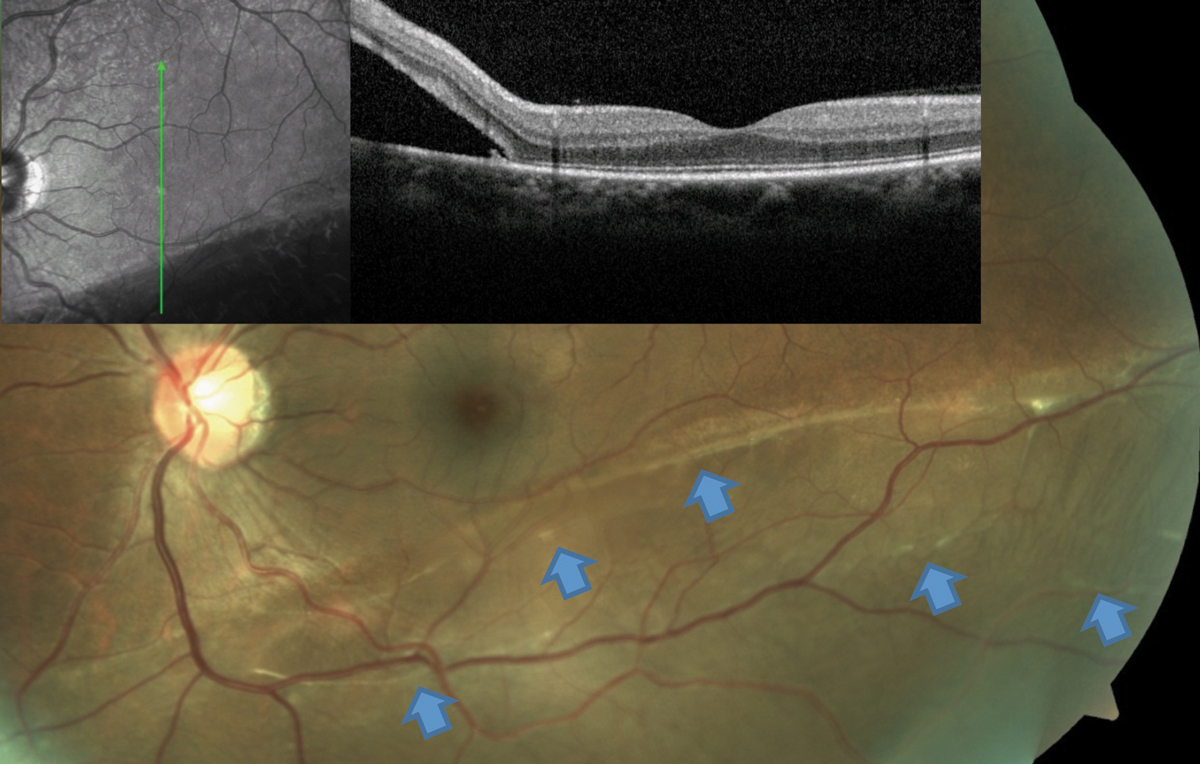 |
| Eyes with an SE of -1.00D to -3.00D had a four-times greater risk of RRD compared with an emmetropic eye. Photo: Mohammad Rafieetary, OD. Click image to enlarge. |
Scottish researchers recently repeated a retinal detachment survey to determine if they could observe definitive evidence of any change in annual rhegmatogenous retinal detachment (RRD) presentations. Their study found the condition to be more common, which was consistent with other findings in Europe. They attributed the trend to increasing myopia and pseudophakia, among other undetermined factors.
There were 875 RRDs recorded, which gave an updated incidence of 16.02 per 100,000 each year in Scotland. The researchers noted that 62.8% occurred in males, and the greatest increases were seen in those aged 50 to 69 and in females aged 40 to 59.
“The biggest increase in RRD incidence is seen in males aged >50 in our cohort,” the researchers wrote in their paper. “The peak in the 50 to 69 age group likely corresponds to the age at which posterior vitreous detachment is most likely to occur.”
They also highlighted that an eye with a spherical equivalent of -1.00D to -3.00D has a fourfold increase in RRD compared with an emmetropic eye, and this risk increases to tenfold if myopia exceeds -3.00D.
“Although it is likely that a higher prevalence of myopia is contributing to the rise in RRD incidence, we cannot be certain, as we did not collect data on axial length, refractive error or socioeconomic status, which has been associated with myopia and RRD previously,” the study authors wrote.
The team concluded that this increasing incidence of RRD should be considered when planning vitreoretinal services in the future.
El-Abiary M, Shams F, Goudie C, Yorston D. The Scottish RD survey 10 years on: the increasing incidence of retinal detachments. Eye (Lond). June 1, 2022. [Epub ahead of print]. |


